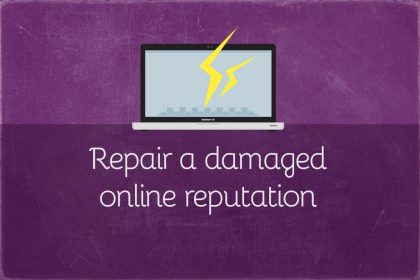How to build an email list for your small business: a comprehensive guide
Love more customers and sales? Learn how to build an engaged email list for your small business in our comprehensive guide.
“If you run a business, you need to be building an email list”.
Ever heard that before?
It’s common advice given to every business owner who’s about to embark on their entrepreneurial journey. Why?
It’s simple – email marketing is still king. In fact, studies show that email generates $38 for every $1 spent. That’s a crazy ROI, isn’t it?
As you can see, email is here to stay. And if you didn’t build your own list yet, it’s the right time to start. In this article I will guide you through the process of building an email list of engaged contacts from scratch.
Ready?
Let’s begin with the basics.
Define your target audience
Before you start building your list, it’s important that you have a clear understanding of what kind of contacts you are looking to get in touch with in the future.
Acquiring unqualified leads, meaning people that aren’t interested in your product or service, will most likely be a waste of time. Remember – email marketing is a marathon, not a sprint. Here are three things you can do to define your target audience.
1) Analyze your existing customers
The first step is to get to know your own audience better. Knowing what kind of people are already interested in your products or services will allow you to target similar audiences.
To gather this data you can send out surveys or questionnaires. Use tools such as SurveyAnyPlace or KyLeads to make the process easier.
2) Run competitive analysis
Another way to define your target audience is to run a competitive analysis.
Spying on your competitors is great for getting a better understanding of what audiences they are targeting and what marketing strategies they use to attract the right crowd. There are a few ways you can go about it.
Firstly, you can use a tool called BuzzSumo to see trending topics in your niche.
For example, if you sell vegan supplements, all you have to do is type the keyword in the search bar and see what kind of content shows up.
Apart from that, a good idea is to check top performing pages for your competitors when it comes to SEO. You can use a tool like SEMrush or CognitiveSEO to see the traffic coming from Google and inspire yourself when it comes to content creation.
Once you have some of your articles ranking in Google, you will start bringing the organic traffic that you can try to convert into leads.
3) Design a buyer persona
Lastly, it’s time to put gathered data together and design a buyer persona for your business. Including all information about your potential customers will be helpful in designing an effective sales funnel.
Here’s a great example of a visual representation of a buyer person created by Tidio.
It includes demographic and behavioural data, as well as more specific information related to the potential customer’s personal qualities.
Qualify your leads
The next step in building an engaged list of email subscribers is to ensure that the leads you generate are qualified.
Acquiring qualified leads is crucial if you want to shorten your sales cycle. It’s a simple logic – the more interested your prospects are in your product or services – the higher the chances that they will buy from you in the future.
Why?
Because by qualifying your leads you are able to leverage the power of personalization in your marketing efforts much better. Knowing your prospects’ profiles from the start will help you design an effective email marketing strategy.
This is why building an email list of qualified leads is so important.
Commonly, there are distinguished 3 different lead qualification standards:
- Sales Qualified Lead (SQL)
- Marketing Qualified Lead (MQL)
- Sales Accepted Lead (SAL)
To qualify your leads, while on a shoestring budget, you can use free chatbots or quizzes. Below is an example of such a qualifying chat you can add on your website.
A simple questionnaire fired automatically when a visitor lands on your website allows you to understand better their customer profile and match your offer specifically to their needs in the long run.
Apart from tools like chatbots, you can also use more traditional methods and try qualifying your leads after they sign up for your email list.
This can be done sending out surveys and questionnaires that can help you understand better what kind of content is your audience expecting.
Create a high-converting landing page
To start collecting email addresses, you need to have a place where your visitors can leave their contact data.
That’s where creating a landing page comes in handy. An attractive landing page displaying your product or service is what can literally decide about the future of your business. This is the first thing your potential customers see, and it’s crucial that the website is optimized to convert visitors into leads.
Here are the elements you should include on your landing generation page:
- Compelling headline
- Clear copy and CTA
- Social proof, testimonials
- Lead capture form
Make sure that your landing page is also SEO-friendly and easy to navigate.
Apart from that, it’s a good idea to create multiple opportunities for your visitors to convert into email subscribers. You can experiment with various lead generation tools and offer several chances to leave an email address, for example by offering a lead magnet on the blog or including CTA in your articles.
Of course, don’t forget about tracking and analyzing your gathered customer behaviour data to adjust your strategy as you go.
Here is an interesting example of a highly-converting landing page by Bid4Papers that is generating thousands of leads every week. It’s straight to the point and communicates a direct benefit.
Bonus: A good idea is to also add a live chat to your landing page. In this way your visitors will be able to communicate with you in real-time and you could answer their most burning questions right away.
Design a lead magnet
Once you’ve built a landing page where your visitors can leave you their contact data, it’s time to create something you can offer them in exchange.
That’s what we call a lead magnet.
A lead magnet can take many forms, depending on your business and on what can be most attractive for your visitors.
For example, ecommerce stores can use a discount code, SaaS companies usually offer ebooks or other types of written content, and solopreneurs might bait visitors with a premium content access or free consultations.
If you want to go a step further, you can consider creating several lead magnets and running A/B tests to see which ones perform best. Making them personalized to the content of the pages where they will be displayed is a good way to build an email list of qualified prospects.
Take a look at this lead magnet offered by firstsiteguide.com.
It’s a great example of a simple, yet effective, incentive. It’s highly relevant to the services offered by the company and it also serves as a way to familiarize them further with what the business is doing.
Offering a valuable resource such as an eBook is also great for boosting your credibility and increasing brand’s awareness. Once your visitors trust you with their email or contact data, you can move on to the process of lead nurturing and slowly push your prospects down the sales funnel.
Use lead generation tools
Almost every marketing process requires a set of tools to make it efficient. So if you want to build an email fast, it’s important that you equip yourself with the right tools, such as services like Klean Leads.
Here are some of the most popular lead generation tools out there:
- Pop-ups
- Chatbots
- Quizzes
- Surveys
- Contact forms
- Free trial
In order to find out which one works best for you, you might need to run A/B tests. A few things to remember when choosing a lead generation tool include:
- In-built analytics
- 3rd party integrations
- Lead qualification feature
- Price
Once your lead generation tool is up and running, make sure to track the progress and closely monitor your results. Also, don’t forget to consider the GDPR regulations when collecting emails or other contact data of your visitors.
Bonus: Here’s the list of lead generation tools you might want to consider using for your own process.
Create an automated email workflow
Finally, it’s the time to put all the pieces together and create an automated flow that will allow you to collect emails on autopilot and build your contact list. Once you have the emails in your CRM system, you will be able to use them to run your email campaigns.
Depending on the lead generation tool you use, it’s a good idea to integrate it with your email marketing software.
A popular option is to use Zapier to integrate it with other applications and tools that you might be using. For example, you could collect emails using a pop-up or a chatbot and then create a workflow in an email marketing tool such as Hubspot to send a series of emails to your new leads.
Here’s how this can look like in reality.
Once your workflow is set up, you can stay in touch with your subscribers by sending out a newsletter or inviting them to online events you might be running, such as webinars.
Key takeaways
All in all, building an email list is a marathon, not a sprint.
Even a small, but steadily growing list of engaged email subscribers can become your golden ticket to boosted sales and increased customer loyalty.
Email marketing is still one of the most effective marketing methods and it’s important that you use it to your advantage.
Don’t let your website visitors bounce never to return again. Instead, try to get in touch with them and get to know their needs and expectations to eventually convert them into paying customers.
Lastly – don’t wait! The earlier you start growing your email list, the better the chances that your business will succeed in the long run.
Good luck!
Photo by Chad Madden









